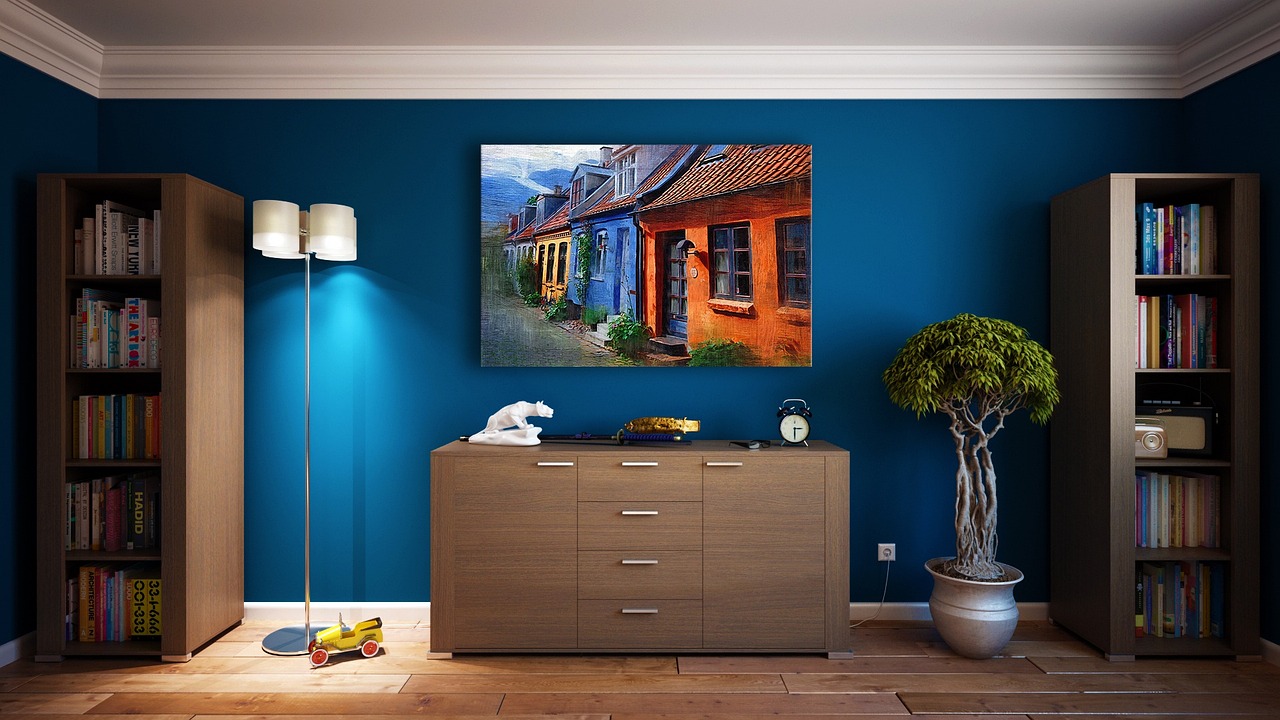In our fast-paced world, finding spaces that nurture both our environmental and mental well-being is more important than ever. “How Can Sustainable Architecture Promote Mental Well-being?” explores how thoughtfully designed, eco-friendly buildings can create harmonious environments that support our mental health. By utilizing natural light, incorporating greenery, and emphasizing community spaces, sustainable architecture can foster a sense of calm, connection, and overall well-being.
Sustainable architecture offers more than just an environmentally friendly approach; it shapes our daily experiences and emotional states. As we transition into spaces filled with natural elements, abundant sunlight, and thoughtfully integrated communal areas, we find ourselves more connected to nature and each other. These environments help reduce stress, boost our mood, and nurture our mental health, proving that the designs that protect our planet can also be sanctuaries for our minds. Have you ever wondered how our built environment affects our mental state? Buildings are more than just spaces for shelter; they’re integral to our daily experiences and overall well-being. In recent years, the concept of sustainable architecture has become increasingly prevalent—not just for its environmental benefits, but also for its potential to enhance our mental health. But how exactly can architecture that’s designed with sustainability in mind impact our mental well-being?
Understanding Sustainable Architecture
Sustainable architecture is an approach to building design that seeks to minimize the negative environmental impact of buildings. This can involve using eco-friendly materials, maximizing energy efficiency, and incorporating renewable energy systems. It’s more than just a trend—it’s a necessary shift towards a more responsible and sustainable future. But sustainability also extends to improving the well-being of the people who use these spaces.
Key Elements of Sustainable Architecture
Sustainable architecture involves several key components designed to minimize environmental impact and promote human well-being. Let’s break them down:
| Element | Description |
|---|---|
| Eco-friendly Materials | Use of materials that are renewable, non-toxic, and have minimal environmental footprints. |
| Energy Efficiency | Designing buildings that use less energy for heating, cooling, and lighting. |
| Water Conservation | Implementing systems to reduce water usage and promote recycling and reuse of water. |
| Indoor Air Quality | Utilizing ventilation systems and materials that maintain or improve air quality. |
| Natural Lighting | Maximizing natural light within spaces to reduce reliance on artificial lighting. |
| Green Spaces | Including plants and outdoor spaces that connect occupants with nature. |
| Renewable Energy Systems | Incorporating solar panels, wind turbines, and other renewable energy sources to power buildings. |
Types of Spaces Influenced by Sustainable Architecture
Different types of spaces can benefit from sustainable architecture, and each offers unique opportunities to promote mental well-being.
Residential Spaces
Homes are our sanctuaries, and sustainable design can make them even more nurturing. By focusing on energy efficiency, natural lighting, and indoor air quality, sustainable homes can create a healthier living environment. Features like green roofs or community gardens can also foster a sense of community and connection to nature.
Workspaces
Workplaces designed with sustainability in mind can lead to happier, healthier employees. Natural light, improved air quality, and even the incorporation of natural elements can reduce stress and increase productivity. Additionally, flexible, adaptable spaces can cater to a variety of work styles and needs.
Public Spaces
Parks, libraries, and community centers designed with sustainable principles can serve as vital hubs for community interaction. These spaces can provide mental health benefits by offering areas for relaxation, exercise, and socializing, all within an environmentally friendly context.

The Psychological Benefits of Sustainable Architecture
Numerous studies have shown that our physical environment plays a crucial role in our mental health. Sustainable architecture boasts several features that can have significant psychological benefits.
Connection to Nature
One of the most impactful aspects of sustainable architecture is its emphasis on biophilia—the innate human connection to nature. Incorporating natural elements and views into building design can reduce stress, improve mood, and enhance cognitive function.
| Benefit | How It Helps |
|---|---|
| Stress Reduction | Green spaces and natural light can lower stress hormone levels. |
| Improved Mood | Exposure to nature has been linked to increased happiness. |
| Cognitive Function | Nature views can improve attention span and cognitive performance. |
Improved Air Quality
Quality air is crucial for our overall health. Sustainable buildings prioritize good ventilation and the use of non-toxic materials, which can drastically improve indoor air quality.
- Healthier Lungs: Reduced pollutants mean fewer respiratory issues.
- Better Focus: Clean air can lead to improved cognitive performance.
- Reduced Allergies: Eliminating toxic materials can decrease allergic reactions.
Enhanced Natural Lighting
Natural light does wonders for our mood and well-being. Sustainable architecture often includes ample windows and skylights to maximize exposure to daylight.
- Vitamin D Boost: Natural light is a primary source of Vitamin D, which is crucial for bone health.
- Better Sleep: Exposure to natural light helps regulate our circadian rhythms, improving sleep quality.
- Mood Enhancement: Natural light can combat depression and elevate our mood.
Social Interaction
Sustainable design often includes communal spaces that encourage social interaction. This sense of community can be incredibly beneficial for mental health.
- Sense of Belonging: Being part of a community can reduce feelings of loneliness.
- Support Systems: Having a network of people provides emotional support.
- Increased Happiness: Social interactions are linked to higher levels of happiness.
Sustainable Architecture and Work Life
As more of us spend significant portions of our lives at work, the design of our workspaces becomes crucial for mental well-being. Sustainable architecture can make workplaces not just more efficient, but also more enjoyable and conducive to mental health.
Flexibility and Adaptability
Workspaces designed with flexibility and adaptability in mind can accommodate a variety of work styles, which can reduce stress and increase job satisfaction.
- Flexible Workstations: These can be easily reconfigured to suit different tasks and team sizes.
- Adaptable Common Areas: Spaces that can serve multiple purposes (e.g., meeting rooms that double as break areas) enhance utility and comfort.
Quiet Spaces
Sustainable office designs often include quiet zones where employees can escape the hustle and bustle.
- Focus Areas: Quiet zones enable better concentration and productivity.
- Relaxation Zones: These areas allow for short breaks that can rejuvenate employees.
Health and Wellness Certifications
Several certifications can guide the implementation of sustainable architectural practices that promote mental well-being. Familiarity with these certifications can help ensure that built environments adhere to the highest standards of health and sustainability.
Leadership in Energy and Environmental Design (LEED)
LEED is one of the most well-known certifications for sustainable buildings. It focuses on several areas, including energy efficiency, water conservation, and indoor environmental quality. LEED-certified buildings are designed to be healthier for their occupants.
WELL Building Standard
The WELL Building Standard focuses specifically on aspects that improve human health and well-being. It covers areas such as air, water, nourishment, light, fitness, comfort, and mind. WELL certification ensures that a building supports physical and mental health.
Living Building Challenge
The Living Building Challenge is a more rigorous standard that requires buildings to be self-sufficient and have a net positive impact on their environment. It’s the gold standard for eco-friendly design and greatly emphasizes the well-being of occupants.

The Economic Angle
While sustainable architecture might seem like a luxury, it can actually offer substantial economic benefits, making it a viable option for both individuals and businesses.
Cost Savings
Energy-efficient buildings save money over time through reduced utility bills.
- Lower Energy Bills: Sustainable buildings use less electricity for heating, cooling, and lighting.
- Water Savings: Efficient systems can significantly lower water use and bills.
Increased Property Value
Sustainable features can increase the resale value of a property.
- Desirable Attributes: Features like energy efficiency and eco-friendly materials are attractive to buyers.
- Government Incentives: Various incentives exist for building sustainably, which can offset initial costs.
Employee Productivity
Sustainable and well-designed workplaces can result in happier, healthier employees who are more productive.
- Lower Absenteeism: Healthier workplaces mean fewer sick days.
- Higher Engagement: Comfortable, enjoyable workspaces can lead to better employee engagement.
Challenges in Implementing Sustainable Architecture
While sustainable architecture offers numerous benefits, it’s not without challenges. Understanding these can help us navigate and overcome them.
Initial Costs
Building sustainably can be more expensive upfront, though the long-term savings often outweigh these initial costs.
- Material Costs: Eco-friendly materials can be pricier.
- Specialized Labor: Sustainable design often requires experts, adding to labor costs.
Lack of Awareness
Not everyone is aware of the benefits or the methods of sustainable architecture, which can hinder its adoption.
- Education Needed: Both consumers and builders may need education about sustainable options.
- Mindset Shift: People are often hesitant to adopt new practices, even if they’re beneficial in the long run.
Regulatory Hurdles
Building codes and regulations sometimes lag behind the latest sustainable practices.
- Slow Updates: Regulatory bodies can be slow to update codes, delaying the adoption of new methods.
- Navigating Bureaucracy: Builders may need to spend extra time and resources to comply with outdated or conflicting regulations.

Success Stories
Despite the challenges, many successful examples demonstrate the positive impact of sustainable architecture on mental well-being.
The Edge, Amsterdam
Known as one of the most sustainable office buildings in the world, The Edge incorporates numerous eco-friendly features like solar panels and rainwater harvesting. It also has plenty of natural light and indoor green spaces. Employees reportedly feel happier and more productive in this environment.
Bosco Verticale, Milan
Milan’s Bosco Verticale (Vertical Forest) is a pair of residential towers that integrate trees and shrubs throughout their design. The extensive greenery not only improves air quality but also provides a unique connection to nature, enhancing residents’ mental well-being.
Steps Towards Implementation
For those inspired to incorporate sustainable practices in their own spaces, here are some actionable steps.
Start Small
You don’t have to overhaul everything at once. Begin with small changes like adding plants, using LED lighting, or choosing eco-friendly materials.
Educate Yourself
Understanding the principles of sustainable architecture can help guide your choices. Look into certifications, read articles, and consult with experts.
Consult Professionals
Architects and builders specialized in sustainable design can provide invaluable insights and help navigate the complexities.
Conclusion
Sustainable architecture offers myriad benefits, extending far beyond environmental impacts. By fostering a connection to nature, improving air quality, and enhancing natural lighting, it can significantly improve our mental well-being. While there are challenges to implementing sustainable practices, the long-term benefits for both mental health and the environment make it a worthwhile pursuit. So next time you step into a well-lit, green-filled space, take a moment to appreciate the mental and emotional boost it provides. Sustainable architecture isn’t just about saving the planet; it’s about improving our lives, one building at a time.



